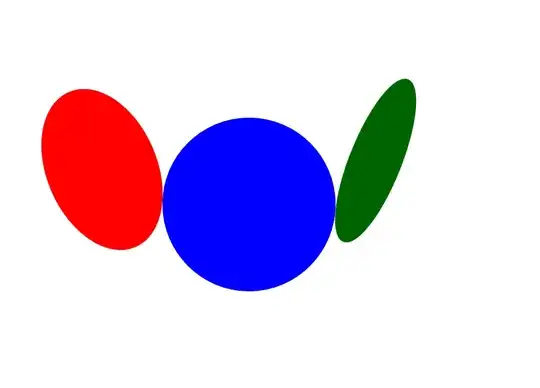If blue has a connected boundary, then it holds. Because if there were no point of intersection of all three sets, you could split $\partial\mathrm{Blue}$ to $\partial\mathrm{Blue}\cap\mathrm{Red}$ and $\partial\mathrm{Blue}\cap\mathrm{Green}$ which would yield a decomposition of $\partial\mathrm{Blue}$ into two open and closed sets, contradicting its connectedness.
(I should probably explain better why these sets are open. For contradiction, assume that $\partial\mathrm{Blue}\cap\mathrm{Red}$ is not open in $\partial\mathrm{Blue}$. Then for some $x\in\partial\mathrm{Blue}\cap\mathrm{Red}$, each neighborhood of $x$ in $\partial\mathrm{Blue}$ contains a point not contained in $\mathrm{Red}$. However, each point in $\partial\mathrm{Blue}$ is contained in either Red or Green. So, it follows that each neighborhood of $x$ in $\partial\mathrm{Blue}$ contains a point in Green and the closedness of Green implies that $x$ is a contained in Green and hence in the triple-intersection, contradicting our assumption.)
Conversely, if $\partial\mathrm{Blue}$ is not connected, then it can be split into two sets $C_1$ and $C_2$ with positive distance. Let $U_1$ and $U_2$ be some disjoint neighborhoods of $C_1$, $C_2$ in $\mathbb{R}^2$ and define the color on $U_i\setminus\mathrm{Blue}$ to be red resp. green for $i=1$ resp. $2$. Then you choose any red-green coloring of $\mathbb{R}^2\setminus (\mathrm{Blue}\cup U_1\cup U_2)$ so that Green and Red are both closed and you get a coloring wihout a triple-intersection.
Some condition on when the boundary is connected can be found in this discussion. (It seems to me that it follows from that discussion that if Blue has a connected interior whose closure is Blue and Green and Red are both connected and unbounded, then this is sufficient for $\partial\mathrm{Blue}$ to be connected, but I'm not completely sure)
